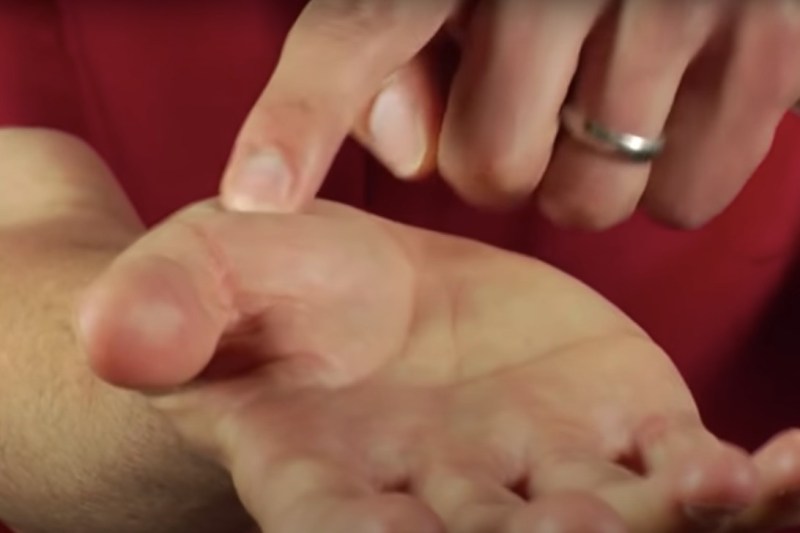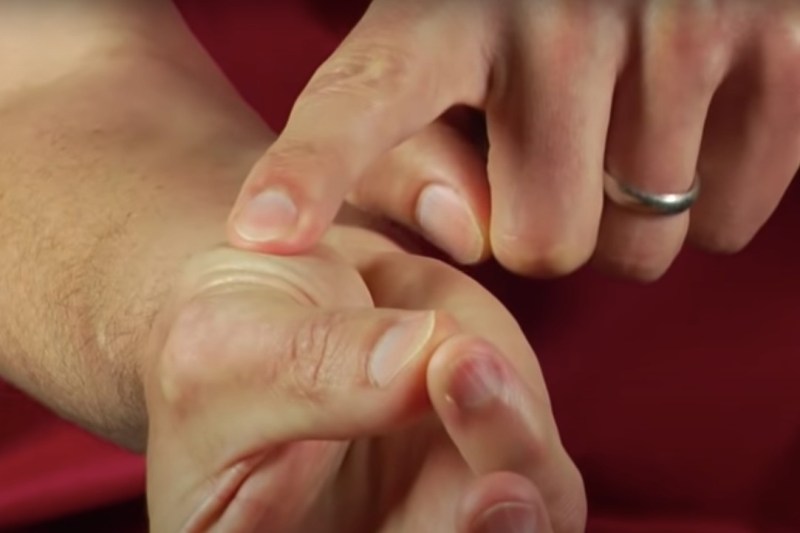
Forget temperature guidelines or cooking time constraints. The best way to gauge meat tenderness is by way of an old culinary school trick. Turns out, you don’t need much when assessing the doneness of steak. You can detect its status simply by comparing how it feels to certain parts of your hand. Dubbed the touch test, it’s a handy way to quickly see how ready your meat is.
We first heard about the test through Dan Thiessen over at Walla Walla Steak Company. He’s made a career out of cooking steak and uses the touch test often. What it may lack in exacting precision it more than makes up for in convenience and efficiency. Plus, it doesn’t require any tools or expensive gadgetry. It’s easy to memorize and a fun little party trick for your next backyard gathering.
This is a great little trick to keep in your back pocket and useful in any setting, whether you’re grilling for company in your backyard or making steak on a camp stove during a weekend in the outdoors. If you don’t want to use your fingers directly on a warm steak, you can use a fork or any other utensil to test the firmness and see how close to dinner you are.
Keep in mind that with steak, this test refers to the consistency of the middle of the cut, as that part cooks the slowest due to its core proximity. And obviously, don’t press too hard in any of these scenarios as your palm will flex to a firmness level that’s useless for inspecting meat. We’ve pulled some images together for reference and whipped up a little guide so you can take on and use the touch test at home.
Raw steak

To get a sense of what raw steak feels like, mimic the above image by pressing down on the pad of your thumb. This is generally what uncooked meat feels like and can serve as your baseline going forward. As meat cooks, it becomes more firm.
Rare steak

Rare steak is a bit firmer. To feel something similar, place your pointer finger and thumb together. With your other hand, again touch the pad of your thumb.
Medium steak

You’re probably catching on to the formula by now. To feel what a medium-done steak is like, place your middle finger and thumb together. Again, the pad of your thumb hardens a bit more. If your steak feels like this to the touch, it’s medium.
Medium-well steak

A medium-well steak will feel like the pad of your thumb when your ring finger and thumb are pressed together.
Well-done steak

Finally, a well-done steak will have the consistency of the pad of your thumb when your thumb and pinky finger are pressed together.
How much does the taste of meat change based on how well done it is?
The taste and texture of meat significantly change depending on how well done you cook it. Rare and medium-rare meat retains most of its natural juices and delivers a more intense, meaty flavor. Some may find this taste slightly metallic or “raw.” When you cook medium-done steak, some juices start to cook out. The flavor profile becomes more balanced, with the meaty notes still present but mellowed slightly. With medium-well to well-done meat, higher significant moisture loss occurs, and the meat becomes drier. Also, the flavor becomes more concentrated, sometimes described as “beefier.” However, some find it less flavorful overall.
Here’s the full video of the touch test displayed above, should you need to review any of the tests. Now, grab your tongs and apron, thaw some steaks, and get to grilling.
Editors' Recommendations
- The best fried chicken recipe you will ever make
- How to grill the steak of your dreams: An aspiring steak master’s guide
- How to grill chicken correctly for a tender, delicious barbecue
- How to cook soft-shell crab at home
- You’ve probably never grilled these foods … but you should


